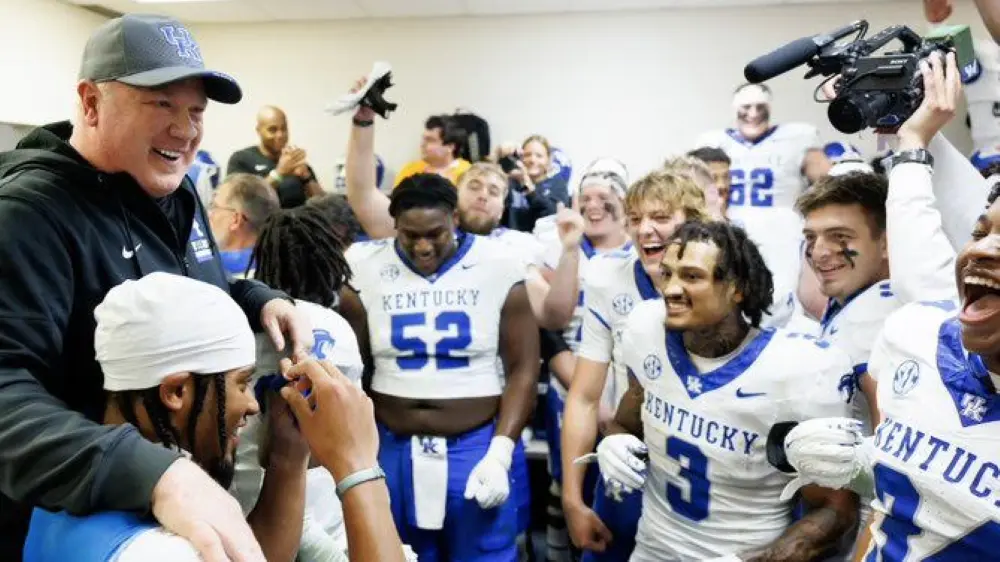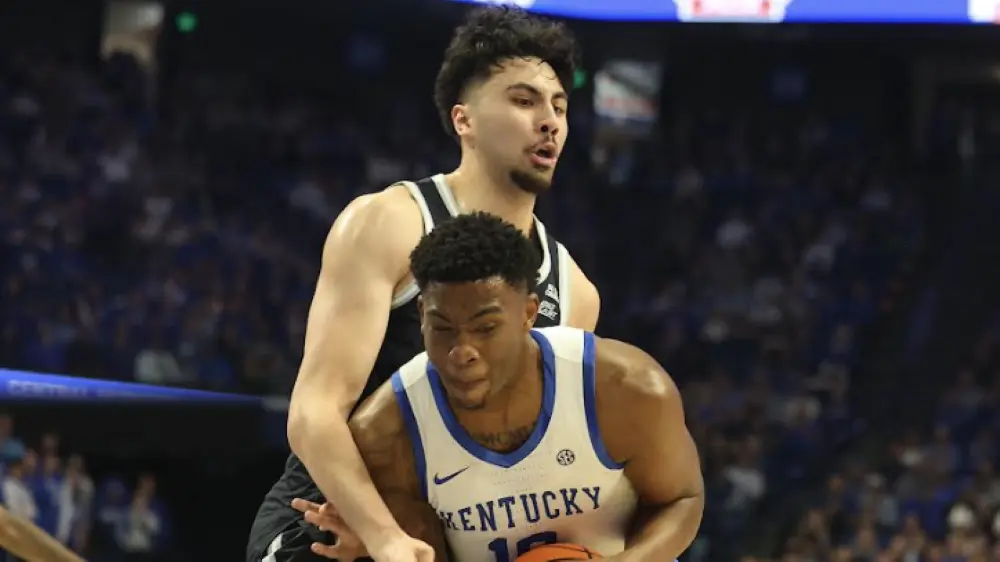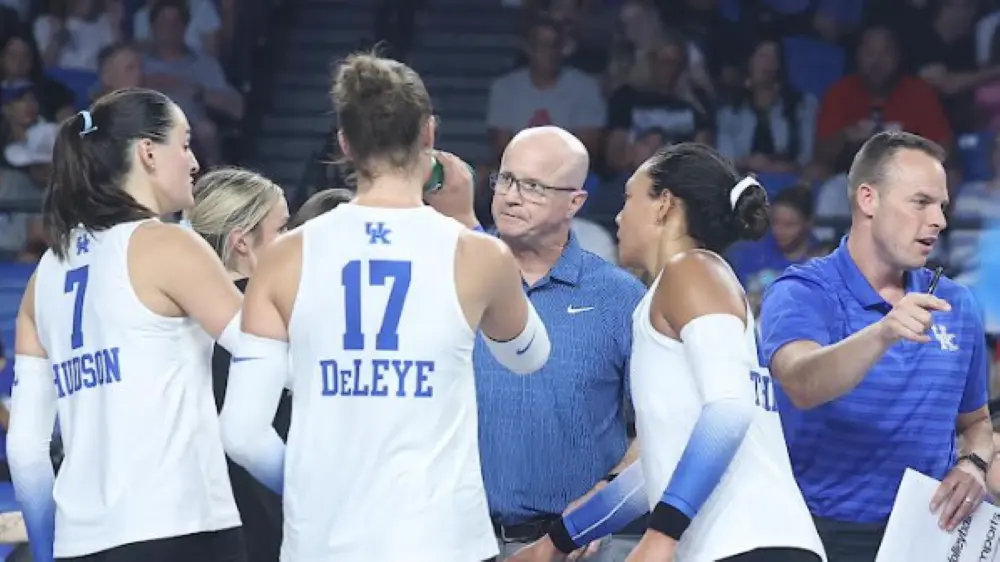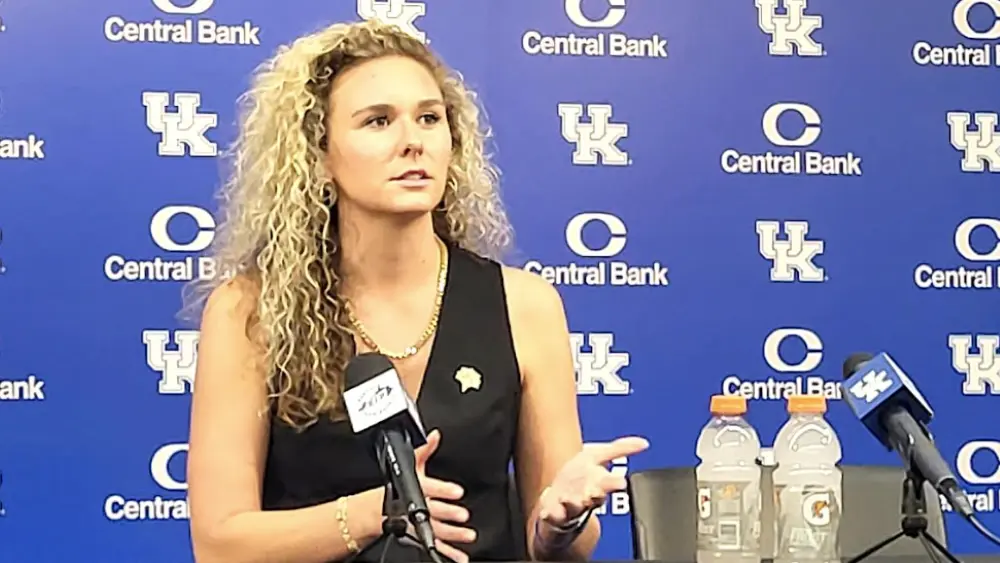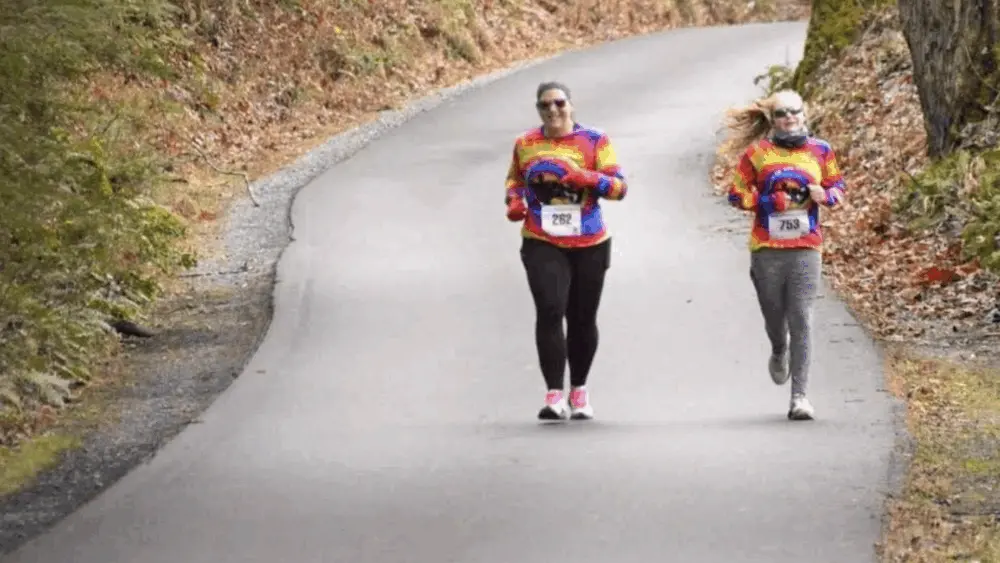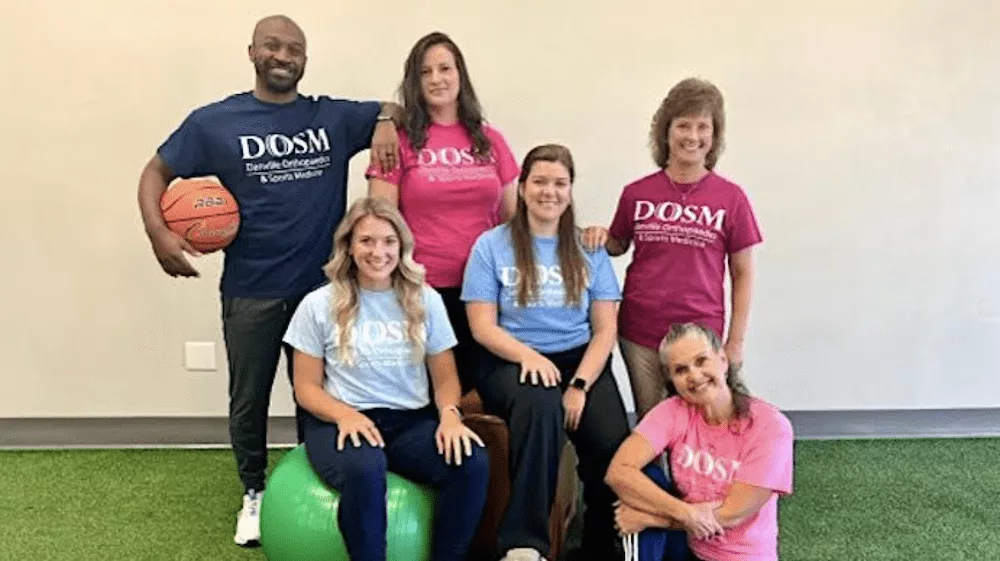
Danville Orthopedics & Sports Medicine staff, from left: Marcus Brown, Holli Hester, Sarah Noland, Chelsea Reed, Deidra Breitenbach and Regina Motley (kneeling).
October is National Physical Therapy Month and considering I have had to depend on Danville Orthopedic & Sports Medicine physical therapists in recent months for hamstring and neck rehab I thought it would be the perfect time for the DOSM staff to share some of its expertise.
Question: October is always National Physical Therapy Month, so what exactly does that mean for DOSM?
Regina Motley, clinic director: “It is a special month to promote our profession in any way possible. It is time for a special emphasis toward educating the public on the benefits of PT (physical therapy). We often do challenges on Facebook to raise awareness of the value of PT.”
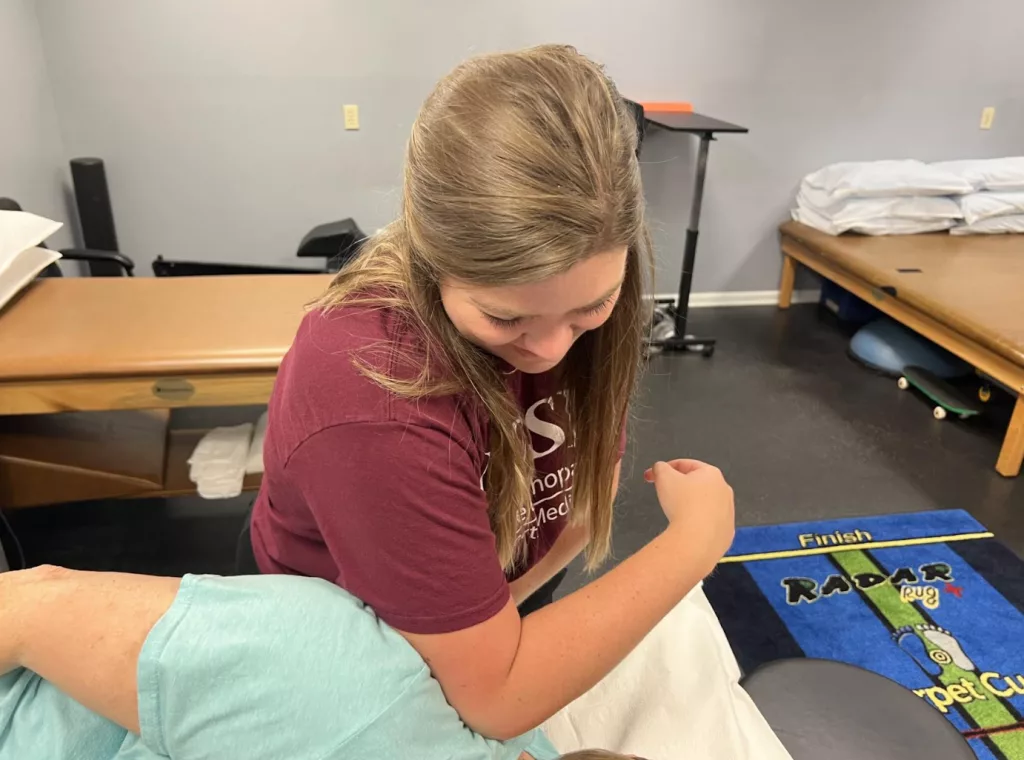
Question: Is there a particular point of emphasis for National Physical Therapy Month this year?
Motley: “This year the emphasis is fall prevention. Therapists can screen clients and identify risk for falls and develop a plan to prevent those.”
Question: Many of your staff members are either former high school and/or college athletes, so does that give them even better insights into how to treat and diagnose injuries for both athletes and non-athletes?
Holli Hester, physical therapist: “While it is not necessary, it definitely adds an extra level of care to rehab and injury prevention. Coming from a background of athletics allows an improved movement pattern breakdown.”
Question: If someone thinks they might have some type of injury, what is the right procedure to follow to seek treatment and how quickly should that be done? Does it normally take a long time to be able to get an appointment for rehab/treatment?
Deidra Breitenbach, physical therapist: “If someone has an injury they can call our office to schedule an appointment right away, especially if it is something that has lingered for weeks. Our office staff will schedule the first available appointment. That can be as early as the same day but usually no more than 10 days from your call. Your insurance may require you to have a doctor’s order for PT to cover the services but in Kentucky, physical therapists can see patients without a doctor’s referral.”
Question: With physical therapy, we often think that means it is for young athletes involved in sports. Is that true or do a wide age range of patients receive treatment from you?
Hester: “We treat people of all ages from pediatrics to geriatrics and all in between. Many people find that PT is only after an injury. However, our field emphasizes injury prevention and lifestyle changes. At DOSM, we see an even number of athletes and older adults.”
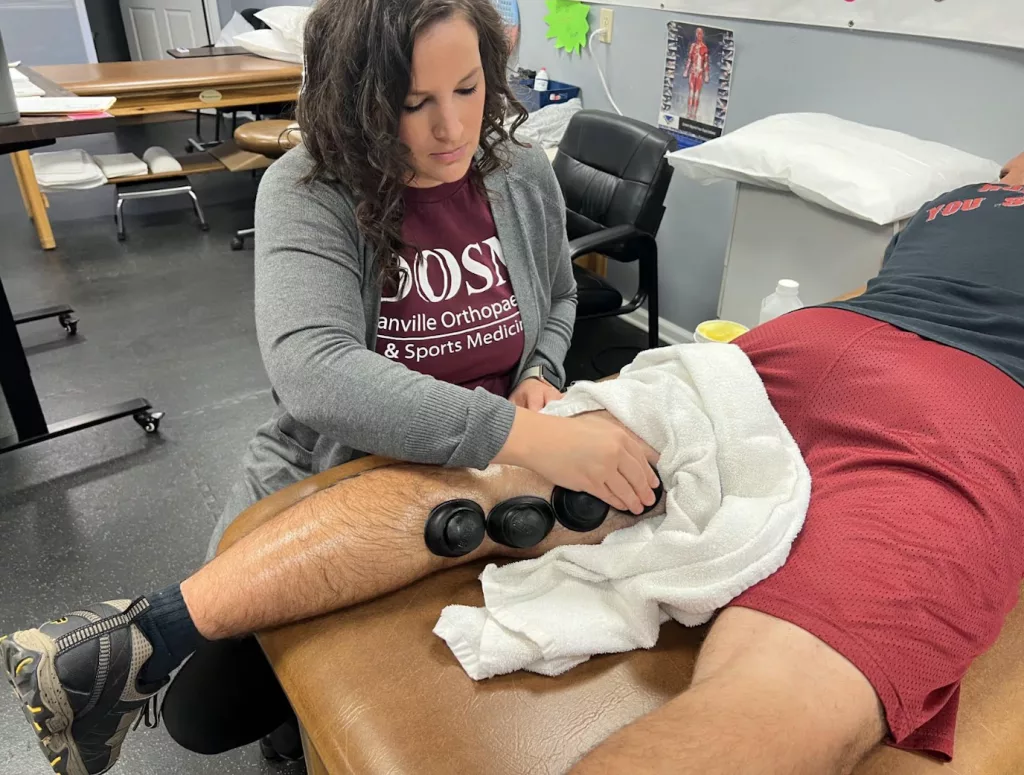
Question: How do your therapists gear rehab differently for a high school/college athlete compared to a senior citizen?
Marcus Brown, physical therapist: “The rehab between an athlete and a geriatric patient is different because the demands are different. What an athlete needs is more demanding compared to your typical geriatric patient , so intervention is going to reflect that. We do a battery of tests to make ensure athletes are ready for a return to sports-related activity. We consider the components of the athletes’ sport and incorporate each component into his/her exercise regiment. Geriatric patients should be treated no differently.’
Question: What is the best advice you would have for elementary through college athletes when it comes to avoiding injuries?
Brown: “Regardless of the sport you play, lift weights. Strength is protective. It’s the best way to avoid injuries and it is important not to ego lift in the weight room. It is more important to prioritize lifting mechanics/form.”
Question: Is there a target recovery date in rehab normally or is that something the therapist has to let evolve to make sure the patient is fully recovered?
Breitenbach: “Target date for recovery is an evolving process. Each new patient is seen and evaluated individually taking into consideration all of the past medical history, prior level of function, surgical intervention and protocol for recovery from surgery. No two patients progress the same with the same diagnosis or injury. There are certain goals and criteria that a patient has to meet to be released from PT to return to their sport. If the injury is not sports related, patients are generally released when they are pain free, have full motion and strength, and returned to their prior level of function or if they have reached a plateau.”
Question: Normally how many times a week would a patient need rehab provided there has been no surgery?
Hester: “Rehab plans are patient specific and diagnosis specific. We tailor the plan to meet the needs of the individual. No surgical physical therapy may come one time a week or maybe three depending on schedules and diagnosis.”
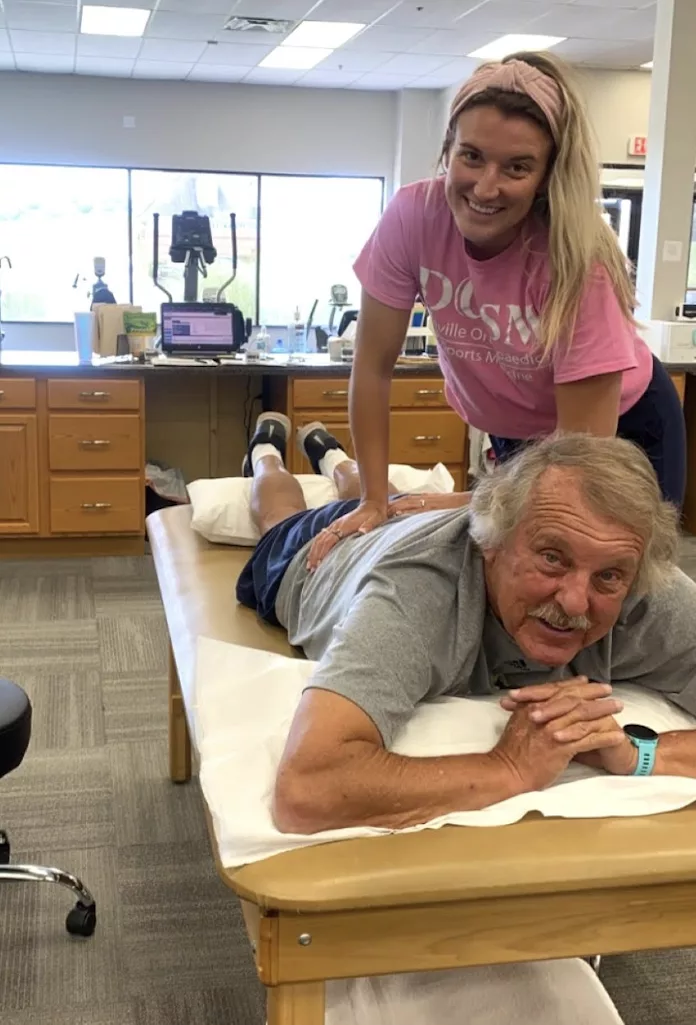
Question: Since everyone has different pain thresholds, is rehab painful and is there “homework” patients need to do to benefit their recovery?
Sarah Noland, physical therapy assistant: “We use a paint threshold ‘verbal rating scale’ in the clinic and some of us use a ‘green, yellow, red light’ scenario with any interventions we do with manual techniques or exercise intensity. The ways that humans experience pain are so vastly different in many aspects and are influenced by their biology, environments and perceptions. We use graded exposure with the techniques and programs we do in the clinic as well as in the patient’s ‘home exercise program’ which we give to all our patients. Active participation with all of these things is vital to the speed and quality of positive patient outcomes.”
Question: How many different high schools and colleges send athletes to you for rehab/recovery?
Chelsea Reed: “Many of our college athletes are from Centre College and Campbellsville University. Occasionally we will get college athletes who are from this area and have gone to school out of the region or state, come home for mid-rehabilitation over the summer breaks and continue their rehab with us.
“We get to work with many of the high schools in our area. In addition to Boyle County and Danville, we also work with high schools including Danville Christian Academy, Burgin Independent, Mercer County, Washington County, Casey County, Garrard County and Lincoln County. What is fun for us is when these athletes are able to return to their respective sports. We love to go watch our athletes play and be cheerleaders for them on the field even after their rehab is concluded.”
Question: What makes your staff members enjoy doing what they do so much despite the challenges of having so many different injuries/issues/personalities to deal with on a daily basis?
Reed: “Our team not only has a love for our career field, but most importantly a love for people and this community. We care deeply for our patients and improving their quality of life. We enjoy making personal connections with our patients and understand that they each have different needs and goals. When challenges do arise, that’s when we can work with our peers and within our team to make changes and create the best approach for each patient based on their needs at that moment. Our ultimate goal is working together to see our patients return to their hobbies. We love getting to see our patients return to doing the things they love: that keeps us persevering through the challenges.”
Question: Tell us a little about some of your staff members and their qualifications that some people might not know?
Noland: “Regina Motley worked as a certified athletic trainer at Nick Bollettieri Tennis Academy (now iMG Academy) and Tates Creek High School. She is a clinical rotation instructor for the UK Physical Therapy program and Centre College internships. Deidra Breitenbach has been practicing some 1991 and has a background in inpatient, home health, orthopedics and sports physical therapy. Holli Hester was a Western Kentucky University cheerleader and coaches at F45 South Lexington. She works as a PRN in a skilled nursing facility and is passionate about geriatrics and neurological conditions. She plans to become a certified strength and conditioning specialist.
“Marcus Brown played football and ran track at Danville High School and was in the Kentucky Army National Guard from 2015-21. Chelsea Reed worked as a physical therapy tech at the UK outpatient sports clinic. I served in the Kentucky Army National Guard from 2009-2019 and worked as a PT tech in an outpatient clinic at the same time. I work as a PRN in a skilled nursing facility specifically for veterans. I am a clinical rotation instructor for the Somerset Community College Physical Therapy Assistant program.”

